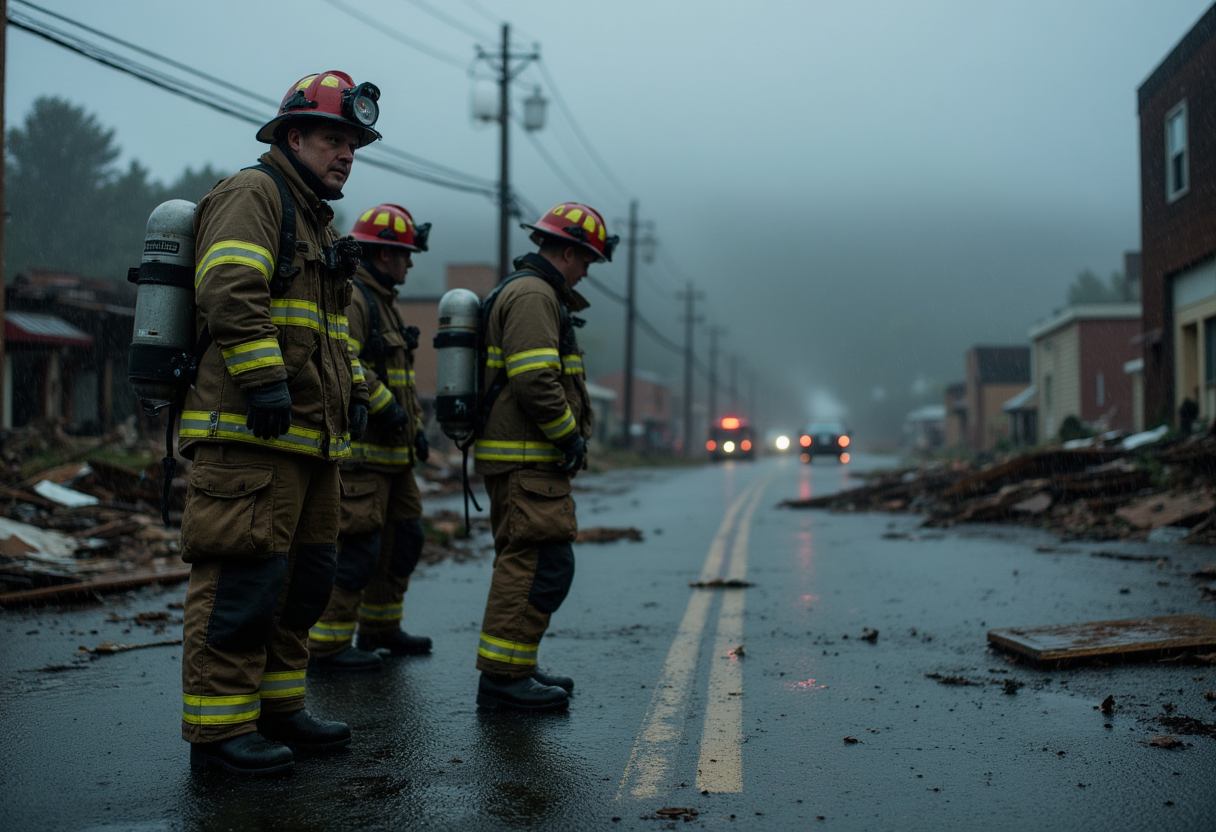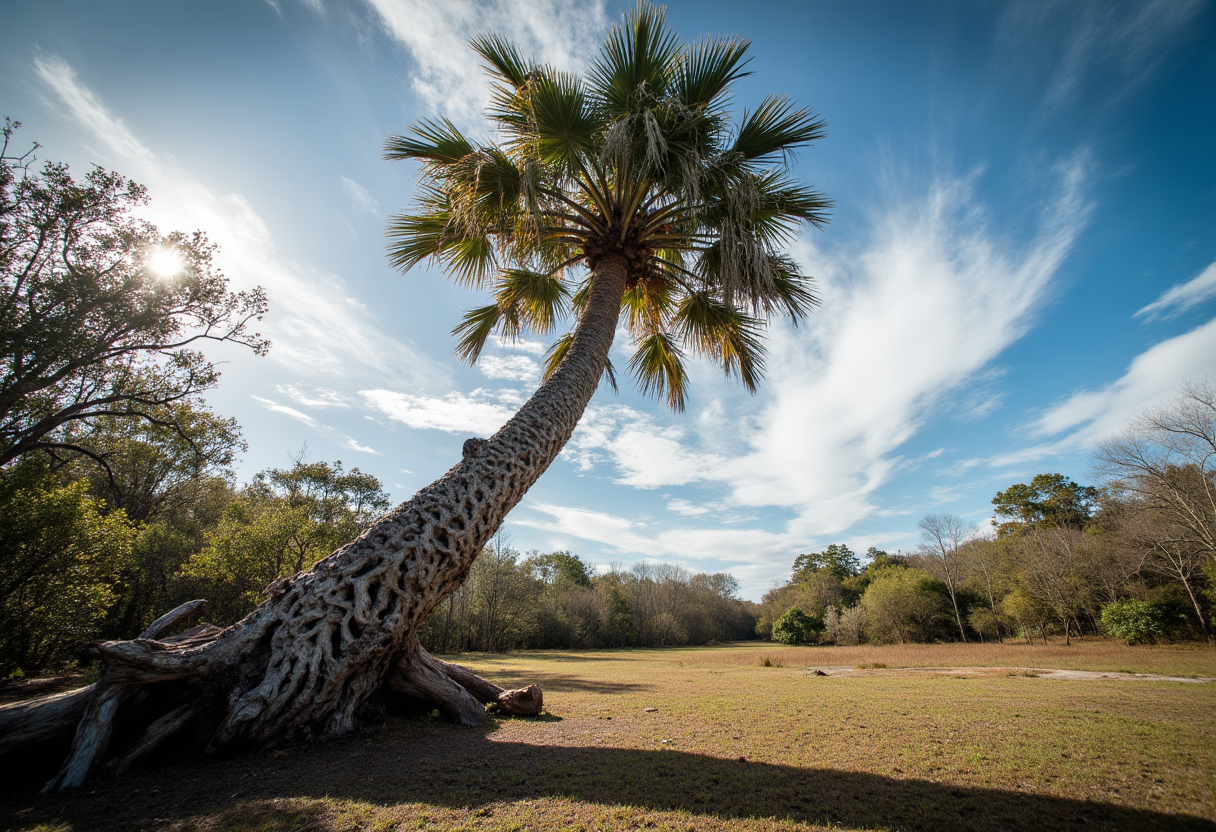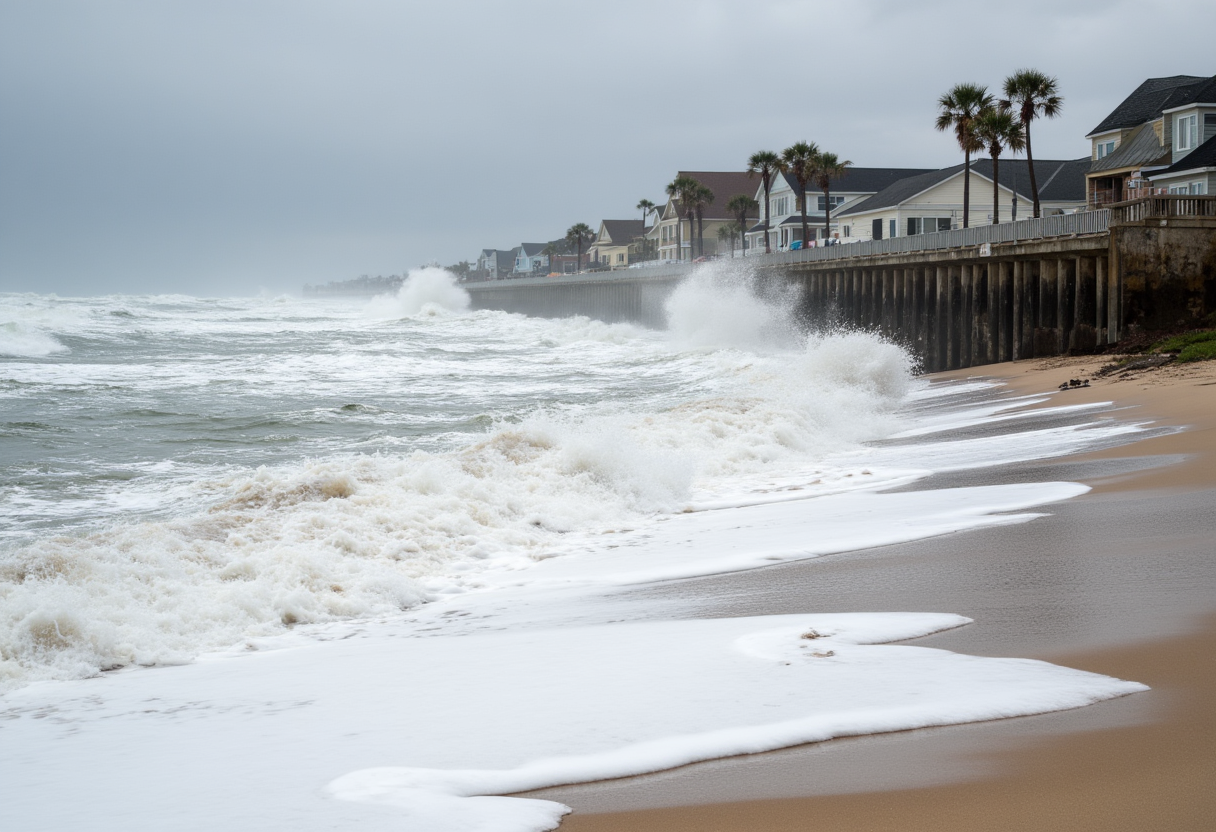"Thirteen Days of Fury: Florida's Back-to-Back Hurricanes"
side-by-side comparison of stylized satellite images, showcasing the dramatic paths of Hurricanes Helene and Milton as they make landfall over Florida,
"Thirteen Days of Fury: Florida's Back-to-Back Hurricanes"
In a rare and alarming display of nature's fury, Florida faced back-to-back hurricanes, Hurricane Helene and Hurricane Milton, within a span of just thirteen days. This unprecedented event has left a trail of destruction and raised concerns about the increasing frequency and intensity of such natural disasters.
The impact of these storms was devastating, with widespread flooding, power outages, and loss of property. As we reflect on the events surrounding Hurricanes Helene and Milton, it becomes clear that understanding and preparing for such disasters is crucial for communities in the affected regions.
Key Takeaways
The occurrence of back-to-back hurricanes in Florida is a rare and concerning event.
Hurricane Helene and Hurricane Milton caused significant damage and disruption.
The frequency and intensity of natural disasters are on the rise.
Understanding and preparation are key to mitigating the effects of such events.
Communities affected by these storms face significant challenges in recovery.
"The Fury of Hurricanes Helene and Milton"
In a rare and alarming sequence, Hurricanes Helene and Milton battered Florida with ferocious intensity just thirteen days apart. This unprecedented event tested the state's resilience and highlighted the growing concern of consecutive natural disasters.
Helene: The Initial Impact
Hurricane Helene made landfall as a Category 4 hurricane, bringing with it 140 mph winds and a 15-foot storm surge. The initial impact was felt most severely in Florida's Big Bend region.
The Category 4 Hurricane's Landfall
The landfall of Hurricane Helene caused significant damage, with widespread power outages and destruction of infrastructure. The storm's powerful winds and storm surge led to flooding in several coastal communities.
HurricaneCategoryWind Speed (mph)Storm Surge (feet)Helene414015Milton516018
Milton: The Follow-Up Hit
Just thirteen days after Helene, Hurricane Milton made landfall, further exacerbating the damage and challenges faced by the affected communities. Milton struck as a Category 5 hurricane, with 160 mph winds and an 18-foot storm surge.
The Category 5 Hurricane's Consequences
A close-up, high-contrast shot of a shattered window, with rain-lashed panes glistening like a thousand tiny diamonds as heavy, gray rain pours down in sheets, creating a mesmerizing dance of water droplets that streak and merge on the glass.
The consecutive hits by Milton led to additional flooding, more extensive power outages, and increased strain on emergency responders. The communities affected by Helene were still recovering when Milton hit, compounding the difficulties faced by residents and responders alike.
We observed that the back-to-back hurricanes not only tested the resilience of Floridian communities but also highlighted the importance of preparedness and disaster response measures.
"Aftermath and Community Response"
In the wake of the hurricanes, stories of heroism and resilience emerged, highlighting the community's capacity to respond to disaster. As we reflect on the aftermath of Hurricanes Helene and Milton, it becomes clear that the true measure of their impact lies not just in the destruction they caused, but in the strength and solidarity of the communities they affected.
Stories of Resilience and Heroism
The response to the hurricanes was characterized by numerous acts of kindness and bravery. Neighbors helped neighbors, and strangers became friends as they worked together to overcome the challenges posed by the storms.
Community Efforts in the Face of Disaster
Community efforts were pivotal in providing aid and support to those affected by the hurricanes. Volunteer groups organized relief efforts, and donations poured in from across the region. Local businesses played a significant role by providing resources and services that were crucial to the recovery efforts.
Rebuilding and Recovery Efforts
The path to recovery involved a concerted effort from both government agencies and local organizations. Plans were developed to not only restore the affected areas but to improve them, making them more resilient to future storms.
a group of exhausted emergency responders, clad in rain-soaked firefighter or rescue gear, standing at the edge of a devastated landscape.
Government and Local Initiatives
Government initiatives focused on infrastructure repair and enhancement, while local projects aimed at supporting individuals and families. The collaboration between different levels of government and community groups was a key factor in the recovery process.
InitiativeDescriptionLead OrganizationInfrastructure RepairRepair and enhancement of damaged infrastructureState Department of TransportationCommunity SupportProvision of aid and resources to affected familiesLocal Non-Profit OrganizationsEconomic RevitalizationPrograms aimed at supporting local businesses and stimulating economic recoveryRegional Economic Development Agency
As we look back on the aftermath of Hurricanes Helene and Milton, it's clear that the community's response was a defining aspect of the recovery process. Through their resilience and collective efforts, the communities affected by the storms demonstrated the power of unity in the face of adversity.
"Understanding Hurricanes and Their Impact"
Hurricanes are complex weather phenomena influenced by various factors, including sea surface temperature and atmospheric conditions. The formation and intensification of hurricanes are influenced by several key factors, including warm sea surface temperatures and low atmospheric pressure.
Science Behind the Fury
The science behind hurricanes is crucial to understanding their impact. Factors contributing to hurricane intensity include the warmth of the ocean waters and the presence of certain atmospheric conditions. By grasping these concepts, we can better comprehend the power of hurricanes.
Key Factors in Hurricane Intensity
Warm sea surface temperatures and low atmospheric pressure play significant roles in hurricane formation and intensification. Understanding these factors helps us predict hurricane behavior and prepare for their impact.
Learning from the Past
Historical attempts to modify hurricanes, such as Project Cirrus and Project STORMFURY, provide valuable context and insights into the challenges of hurricane mitigation. These projects demonstrate the complexity of hurricane science and the need for continued research.
Past Experiments: Project Cirrus and Project STORMFURY
Project Cirrus and Project STORMFURY were significant experiments aimed at modifying hurricanes. Although the outcomes were mixed, they contributed to our understanding of hurricane science and the difficulties of altering these powerful storms.
By understanding the science behind hurricanes and learning from past experiences, we can better prepare for and respond to these intense weather events.
FAQ
What were the categories of Hurricanes Helene and Milton when they hit Florida?
We observed that Hurricane Helene made landfall as a Category 4 hurricane, while Hurricane Milton was a Category 3 hurricane. The consecutive storms brought catastrophic winds and rain to our state.
How did the back-to-back hurricanes affect Florida's infrastructure?
We saw that the repeated onslaught of the two hurricanes caused significant damage to our roads, bridges, and buildings, leaving many communities without power or access to basic necessities.
What was the response of the community to the disasters caused by Hurricanes Helene and Milton?
We were heartened by the resilience and heroism displayed by our communities, with many residents and emergency responders coming together to provide aid and support to those affected.
How did the government and local authorities respond to the rebuilding and recovery efforts?
We worked closely with government agencies and local organizations to launch initiatives aimed at restoring and improving the affected areas, with a focus on providing support to those in need.
What are the factors that contribute to the formation and intensity of hurricanes?
We understand that hurricanes are complex weather phenomena influenced by a range of factors, including sea surface temperature, atmospheric conditions, and wind patterns, which we will explore in more detail.
Have there been any attempts to modify or mitigate the impact of hurricanes in the past?
We have examined the historical context of hurricane modification efforts, including projects that aimed to disrupt or weaken hurricanes, and will discuss their outcomes and implications.
What can we learn from the experience of Hurricanes Helene and Milton?
We believe that the back-to-back occurrence of these two hurricanes provides valuable insights into the importance of preparedness, community resilience, and the need for continued research into the science behind hurricanes.
How can we prepare for future hurricanes?
We recommend that residents and communities take proactive steps to prepare for future storms, including creating emergency plans, stocking supplies, and staying informed about weather conditions.
Earl Lee
"Thanks for reading. Until next time, keep exploring Florida's peculiar charm!"
Florida Unwritten Staff
Earl Lee





